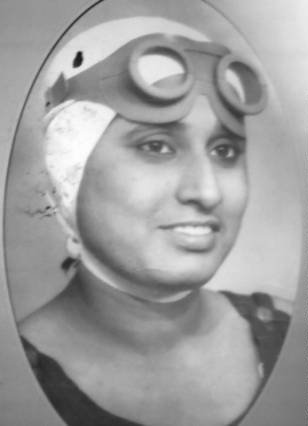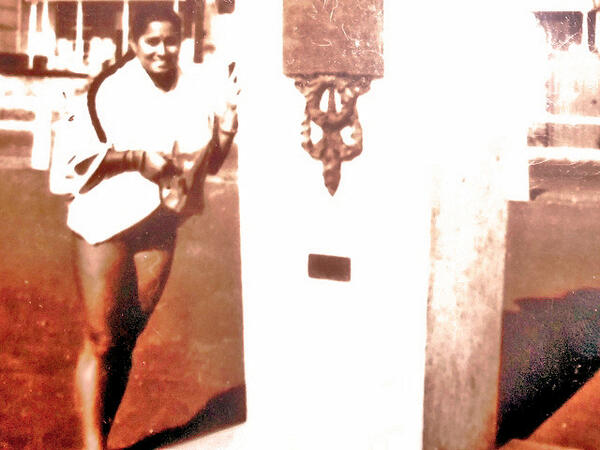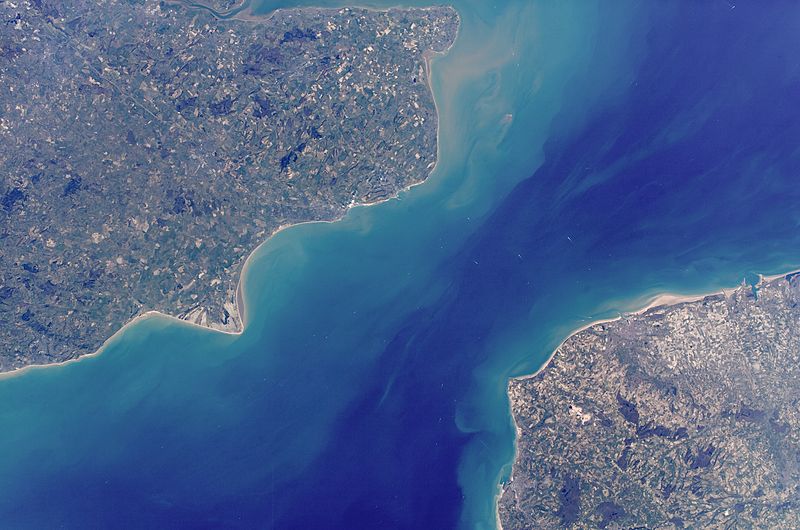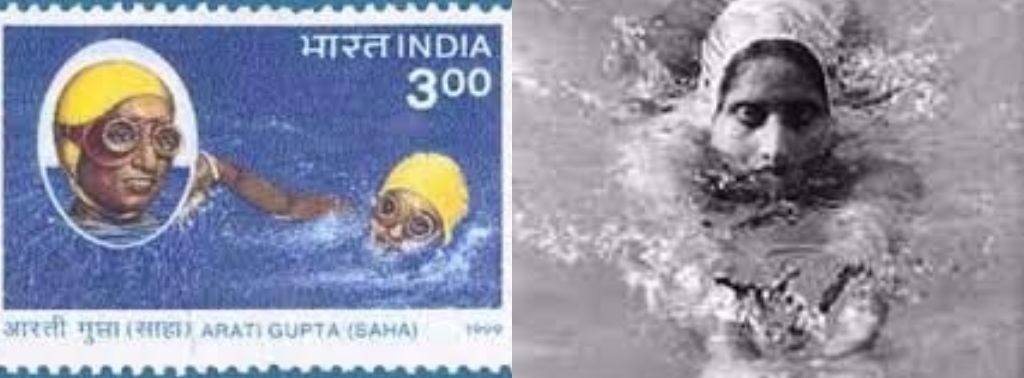How a 19-Year-Old Girl From Bengal Became the First Asian Woman to Conquer the English Channel
At a time when the rest of the world believed that Indian women rarely ventured outside their kitchens, 19-year-old Arati Saha overcame obstacles, both physical and mental, to carve her way to success.

Behind many of the world’s best adventures are women who broke barriers, broke records, or simply went above and beyond what was considered possible or even the norm for women at their time. Although far from the limelight, their struggle, passion and work inspires all who know them and they are role models for many.
One such amazing woman who left a mark in her respective field — an uncharted territory for women in her time — is Arati Saha. In 1959, just five days past her 19th birthday, she became the first and fastest Asian woman to successfully swim across the English Channel in 16 hours 20 minutes.

Photo Source
On September 24, 1940, Arati was born into a middle-class Bengali family in Calcutta (now Kolkata) in British India. Her father, Panchugopal Sahu, was employed in the armed forces. The middle-born of three siblings, she lost her mother when she was 2 years old and was raised by her grandmother.
Arati loved swimming even as a child. She would often accompany her father and uncle to the city’s Champatala Ghat for a bath, and this is where she got her initial lessons in swimming. Noticing his young daughter’s burgeoning interest, Arati’s father admitted her to the Hatkhola Swimming Club where she caught the attention of Sachin Nag, India’s first Asian Games gold medallist.
At the time, Nag was India’s foremost swimming powerhouse. In 1940, he had set the national record for the 100m freestyle, a record that remained unbroken for 31 years. Other than his career as an expert short- and long-distance swimmer, Nag also mentored Bengal’s most talented swimmers.
Impressed by Arati’s natural talent and affinity for swimming, Nag took her under his wings and the little girl blossomed under his guidance. In 1946, at the age of five, she won the first medal of her swimming career – the gold in 110-yard freestyle at Kolkata’s famous Shailendra Memorial Swimming Competition.

Photo Source
Arati’s passion for swimming ensured that her progress in the sport was quick: between 1946 and 1951, she won 22 state-level competitions in swimming events like 100m freestyle, 100m breast stroke and 200m breast stroke. In 1948, she won two silvers – in 100m freestyle and 200m breast stroke – and a bronze – in 200m freestyle – at the national championship held in Mumbai.
Determined to excel, the hardworking girl put in her sweat and blood, and in 1951, went on to create an all-India record in 100m breast stroke. The same year, she also set new state-level record in 100m freestyle, 200m freestyle and 100m back stroke.
In 1952, after a few national tiles, Arati represented India at the Helsinki Olympics along with fellow swimmer, Mumbai girl Dolly Nazir. The youngest girl in the contingent, she did not return with a medal but came back richer for the experience.
As an achievement, Arati’s participation at the Helsinki Oylmpics is only dwarfed by the joy of standing below the fluttering Indian flag after successfully crossing the English Channel.

Photo Source
One of the proudest moments in India’s sporting history, Arati first got the inspiration to attempt this feat from two swimming legends – Brojen Das and Mihir Sen.
At the 1958 Butlin International Cross Channel Swimming Race, Brojen Das (born in Bikrampur in Bengal, now in Bangladesh) became the first Asian to cross the English Channel. When Arati sent a congratulatory message to the swimmer on his achievement, he replied stating that she too was capable of achieving it. Not only this, Das also proposed Arati’s name to the organizers for the next year’s event.
Other than Brojen Das, it was Mihir Sen who encouraged Arati to seriously think about participating in the event. On September 27, 1958, Sen became the first Indian to swim the English Channel in the fourth-fastest time. The legendary swimmer also went on to earn the distinction of being the only man to swim the oceans of the five continents – the Palk Strait, The Strait of Gibraltar, the Dardenelles, the Bosphorus and the Panama Canal – in one calendar year, 1966.
Also Read: Record Breaking Swimmer Bhakti Sharma on Her Struggles, Victories and the Olympic Dream
Sen, along with Arun Gupta (the assistant secretary of Hatkhola Swimming Club), organised fund-raising events and other initiatives to make Arati’s participation in the event possible. However, despite their sincere efforts, funds raised still fell short of the target.
At this point, Arati’s supporters took up the matter with Chief Minister of West Bengal Dr. Bidhan Chandra Roy, and Prime Minister Jawahar Lal Nehru, both of whom showed keen interest in Arati’s endeavour and helped arrange the logistics of her trip.
After training rigorously for the event, Arati finally left for England on July 24, 1959. The race was scheduled for August 27 and involved crossing the 42-mile stretch from Cape Gris Nez in France to Sandgate in England. A total of 58 participants, including 5 women, from 23 countries would participate in the competition.

Photo Source
The big day finally arrived but it did not get off to a good start. Arati’s pilot boat did not arrive on time and she had to start late by 40 minutes. Having missed the favourable weather conditions, she had to face a strong opposing current when she was just five miles from the English coast.
After struggling for the next six hours against the current, Arati had to finally quit under pressure from her pilot. But the tenacious young woman was not one to give up in the face of failure. Training hard, she prepared herself for a second attempt.
On September 29, 1959, Arati made her second attempt. After battling rough waves and powerful currents for 16 hours and 20 minutes, she finally reached Sandgate, her destination on the English coast. The first thing she did was hoist the Indian tricolour, fluttering proudly in the cool breeze as if it knew that this victory was not just for Arati, but for all the women of India.
On September 30, the All India Radio announced Arati’s memorable achievement to the country. Next year, she was awarded the Padma Shri in recognition of her relentless determination, indomitable spirit and outstanding courage that helped her accomplish this feat. She was the first Indian female sportsperson to be awarded India’s fourth-highest civilian award.

Photo Source
Arati passed away due to jaundice in 1994, a month before her 54th birthday, bringing the curtains down on a glorious chapter in Indian swimming. In 1999, to commemorate her conquest of the English Channel, the Department of Posts issued a postage stamp in her memory.
At a time when the rest of the world believed that Indian women rarely ventured outside their kitchens, Arati overcame obstacles, both physical and mental, to carve her way to success. The example she set decades ago continues to inspire countless Indian women to chase their dreams, no matter how improbable they seem.
You May Like: The First Indian Woman to Go to Antarctica has Visited 180 Countries in 50 Years
Like this story? Or have something to share? Write to us: [email protected], or connect with us on Facebook and Twitter.
NEW: Click here to get positive news on WhatsApp!
This story made me
-
97
-
121
-
89
-
167
Tell Us More
We bring stories straight from the heart of India, to inspire millions and create a wave of impact. Our positive movement is growing bigger everyday, and we would love for you to join it.
Please contribute whatever you can, every little penny helps our team in bringing you more stories that support dreams and spread hope.



















